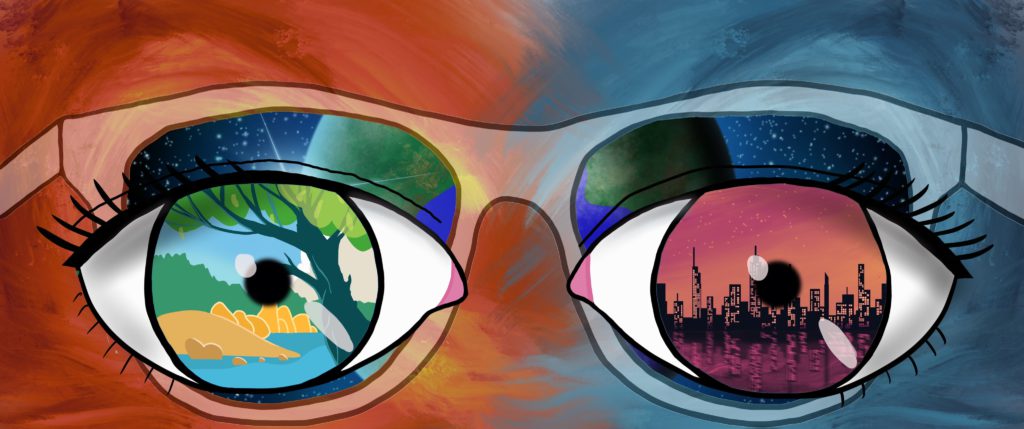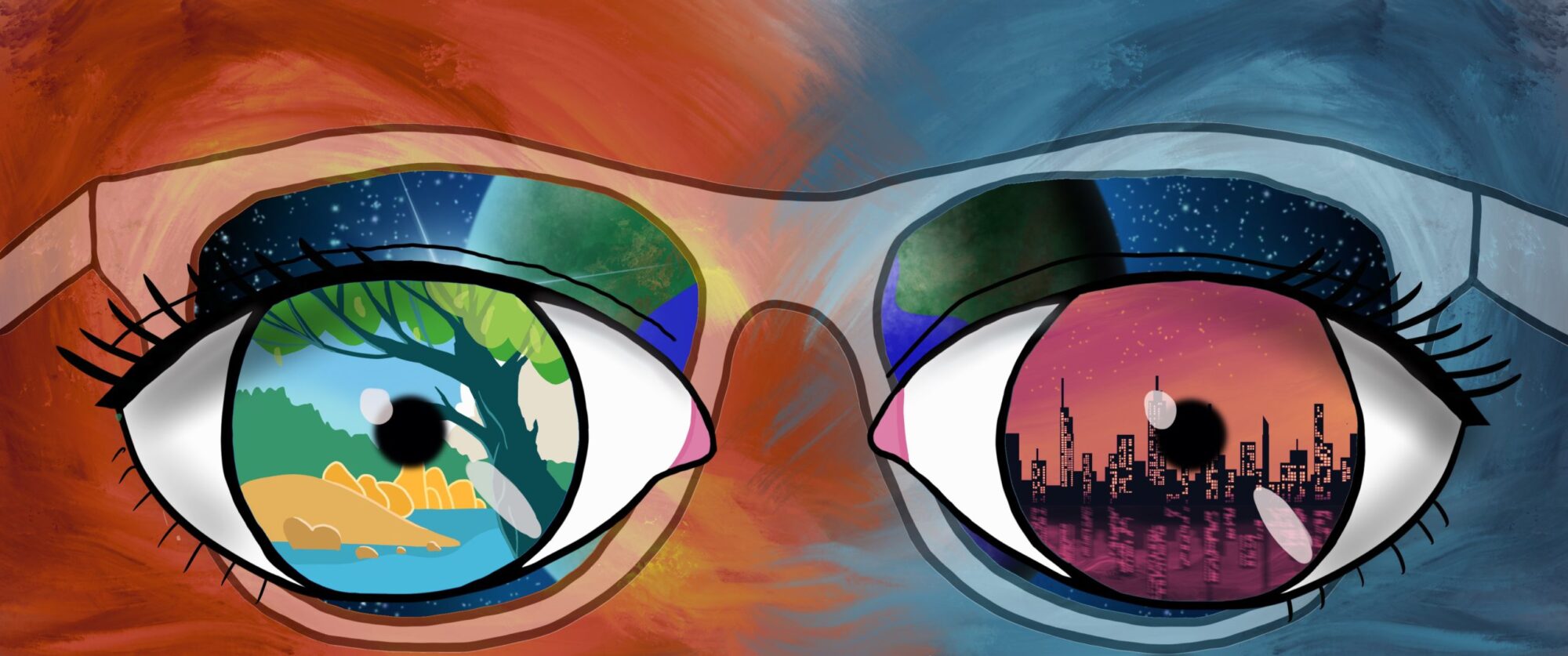
My drawing is inspired by “Two-Eyed Seeing,” an Indigenous framework. Two-Eyed Seeing is when you look through one eye with the knowledge of the indigenous, and through the other with the western/mainstream knowledge, can be combined together to benefit everyone around you. This can be seen in my drawing through the irises of the eyes. In one eye, inspired by the Indigenous, a serene habitat, and in the other, inspired by mainstream media, a populated city. Looking through the eyes with this knowledge, and into the glasses, you can see our Earth. This Earth symbolizes unity and peace, and that there aren’t many struggles going on in the world. The glasses symbolize a façade; how we can choose to see the unity of the world, blanketing over many problems. However, when you take off the glasses, you are met with reality, the waves of fire and water clashing with each other. The colliding waves symbolize the differences in Indigenous and western mindsets, and also show that with Two-Eyed Seeing, it is not perspective to everything in the world. Andrea Reid criticized this framework, as Two-Eyed Seeing can allow for multiple ways of knowing, but is not the solution in every context. Through the stories of Andrea Reid and Megan Bailey, it was difficult to hear that even now, in 2021, there are still no solutions that can appease both the Indigenous and the non-indigenous, which is portrayed in the waves. The Mi’kmaq lobster dispute is a prime example of how that there is no solution that can appease both parties. In more recent news, the Indigenous received the short end of the stick, and can no longer get lobster outside of the commercial season, which goes against their rights. This is the clashing of waves, as there is no solution. I employed differences in colours with the red and blue contrasting each other in the eyes and in the waves to portray the pushbacks with each culture. As Andrea Reid mentioned, there is lots of pushback in western science with Indigenous science, and that there is some effort to try to include Indigenous knowledge, but it is not a focus. Even at UBC, I never realized, which is now shocking, that there is no course in science that is focused on indigenous context. Like the glasses, the facade, UBC talks a lot about positive Indigenous inclusion, but has no real action. Moving forward, appreciating indigenous knowledge systems, valuing their relationships, and building trust and communication with both parties, is important. I feel that even though the Indigenous are given a lot more “rights,” they aren’t acted upon, and still face many of the issues that they were having in the 1900’s. Through Two-Eyed Seeing, a solution could be made with both the Indigenous and the non-indigenous in mind.
